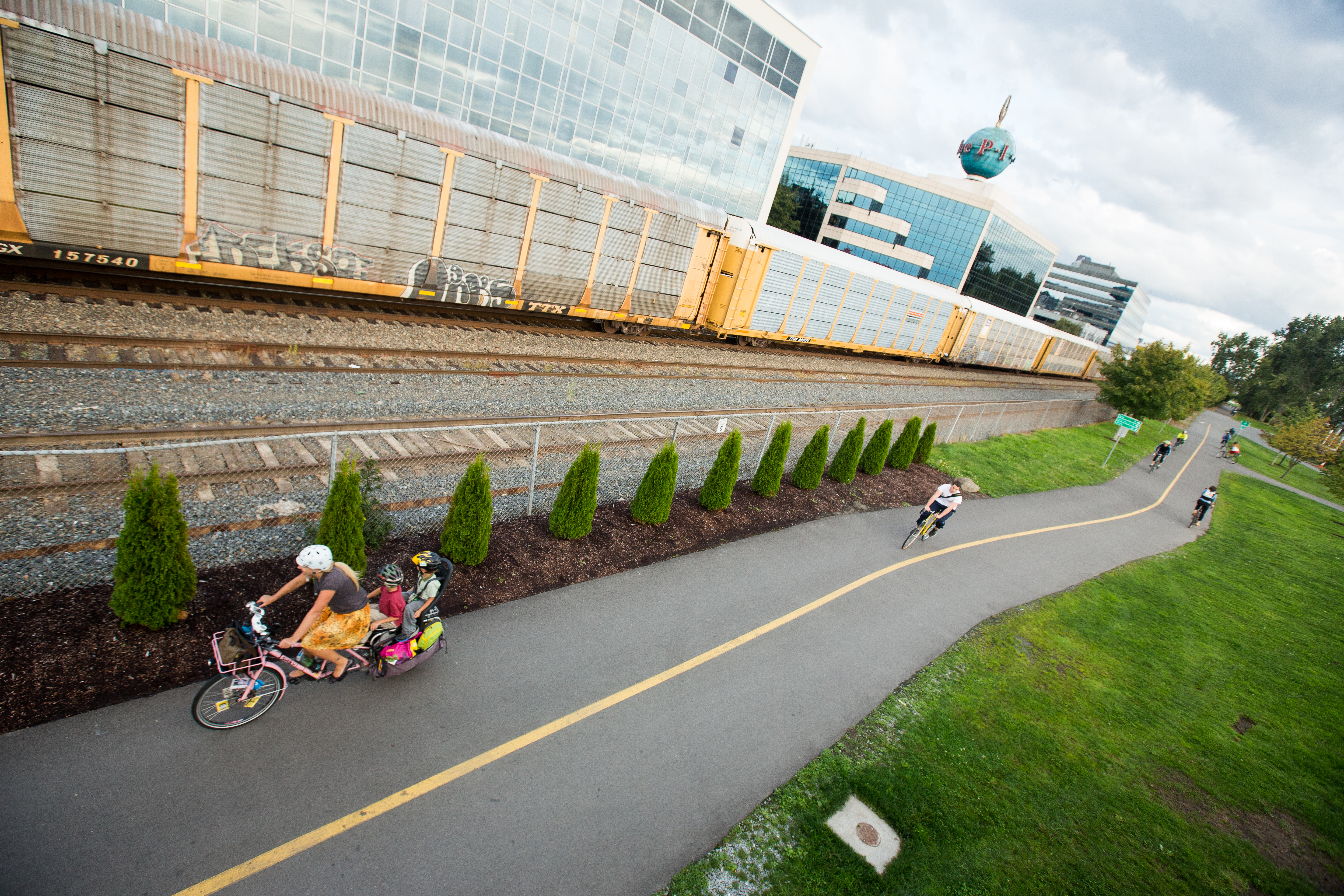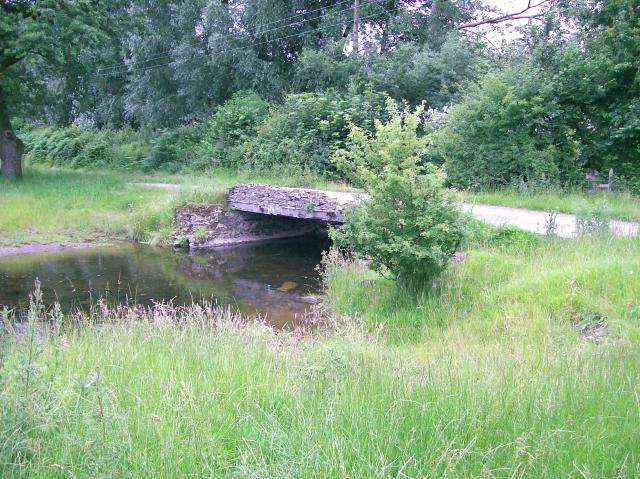|
Lampeter, Aberayron And New Quay Light Railway
The Lampeter, Aberayron and New Quay Light Railway was an independent branch line railway in south west Wales. It connected Aberayron (later spelt Aberaeron) to the former Manchester and Milford Railway line at Lampeter; New Quay was never reached. It opened in 1911 and was loss-making from the outset; it was worked, and to some extent funded, by the Great Western Railway, and absorbed by that company in 1922. The limited passenger train service was discontinued in 1951, but at the same time a new creamery was opened at Green Grove on the line near Felin Fach, bringing significant milk traffic to the line. The remaining general goods traffic ceased in 1965 and the milk traffic finished in 1973, when the line closed completely. First railways In the eighteenth century, most of Aberayron's trade had been conducted by sea; the road network was of poor quality and inadequate. The main materials of trade were slate, limestone, coal and grain; the hinterland was solely agricultural. ... [...More Info...] [...Related Items...] OR: [Wikipedia] [Google] [Baidu] |
Aberaeron
Aberaeron, previously anglicised as Aberayron, is a town, community, and electoral ward between Aberystwyth and Cardigan, in Ceredigion, Wales. Ceredigion County Council offices are in Aberaeron. The name of the town is Welsh for ''mouth of the Aeron'', derived from the Middle Welsh ', "slaughter", which gave its name to Aeron, who is believed to have been a Welsh god of war. The population was 1,520 in 2001, and 1,422 in 2011. History and design In 1800, there was no significant coastal settlement here. The present town was planned and developed from 1805 by the Rev. Alban Thomas Jones Gwynne. He built a harbour which operated as a port and supported a shipbuilding industry in the 19th century. A group of workmen's houses and a school were built on the harbour's north side, but these were reclaimed by the sea. [...More Info...] [...Related Items...] OR: [Wikipedia] [Google] [Baidu] |
Ystrad Aeron
Ystrad Aeron is a small village west of Felinfach on the A482 between Lampeter and Aberaeron, Ceredigion, Wales. It is part of the constituent community of Llanfihangel Ystrad. Facilities The church, St Michael's, is in the centre of Ystrad Aeron. It survived as a medieval church until 1877, when it was entirely rebuilt. Theatr Felinfach is located just outside the village, as is the Felin Fach Creamery. Other facilities in the village include a garage, a shop, a farmers’ co-op, a caravan park, and a pub, ''The Vale of Aeron''. Neuadd Goffa Felinfach Memorial Hall serves both Ystrad Aeron and Felinfach villages. The Lampeter, Aberayron and New Quay Light Railway line ran through the village. Felin Fach railway station closed in 1951 to passenger services. Initially it was named Ystrad. General freight ceased in 1963, and milk traffic in 1973. Dylan Thomas The Vale of Aeron pub was frequented by Dylan Thomas and his wife, Caitlin Thomas, when they lived at Plas G ... [...More Info...] [...Related Items...] OR: [Wikipedia] [Google] [Baidu] |
Cycle Path
A bike path is a bikeway separated from motorized traffic and dedicated to cycling or shared with pedestrians or other non-motorized users. In the US a bike path sometimes encompasses ''shared use paths'', "multi-use path", or "Class III bikeway" is a paved path that has been designated for use by cyclists outside the right of way of a public road. It may or may not have a center divider or stripe to prevent head-on collisions. In the UK, a ''shared-use footway'' or ''multi-use path'' is for use by both cyclists and pedestrians. Bike paths with independent rights-of-way Bike paths that follow independent rights-of-way are often used to promote recreational cycling. In Northern European countries, cycling tourism represents a significant proportion of overall tourist activity. Extensive interurban bike path networks can be found in countries such as Denmark or the Netherlands, which has had a national system of cycle routes since 1993. These networks may use routes dedicated exc ... [...More Info...] [...Related Items...] OR: [Wikipedia] [Google] [Baidu] |
Camping Coach
Camping coaches were holiday accommodation offered by many railway companies in the United Kingdom and the Republic of Ireland from the 1930s. The coaches were old passenger vehicles no longer suitable for use in trains, which were converted to provide sleeping and living space at static locations. The charges for the use of these coaches were designed to encourage groups of people to travel by train to the stations where they were situated; they were also encouraged to make use of the railway to travel around the area during their holiday. History Camping coaches were first introduced by the London and North Eastern Railway in 1933, when they positioned ten coaches in picturesque places around their network. The following year, two other railway companies followed suit: the London, Midland and Scottish Railway, with what it originally called "caravans", and the Great Western Railway which called them "camp coaches". In 1935 they were introduced on the Southern Railway. At ... [...More Info...] [...Related Items...] OR: [Wikipedia] [Google] [Baidu] |
River Aeron
The River Aeron ( cy, Afon Aeron) is a small river in Ceredigion, Wales, that flows into Cardigan Bay at Aberaeron. It is also referred to on some older maps as the River Ayron. Etymology The name of the river means "battle" or "slaughter" and derives from the Middle Welsh ' with the same meaning. Aeron is believed to have been a Welsh god of war. Past interpretations of the name have included that of William Owen Pughe, who in his ''Dictionary of the Welsh Language'' believed ' meant "queen of brightness". Aeron can also mean berries, fruit and grain. It’s a word that suggests the fruitfulness of the autumn harvest in a valley of plenty. Sources and Valley It has its source in Llyn Eiddwen, in the range of hills called Mynydd Bach. It then follows a more or less westerly and then north-westerly track to the sea. It has a rather broad river valley bounded by low hills and has relatively few significant tributaries which include the Gwenffrwd, Nant Wysg, Nant Picadilly, N ... [...More Info...] [...Related Items...] OR: [Wikipedia] [Google] [Baidu] |
River Dulas
The River Dulas (Welsh: ''Afon Dulas'') is a tributary of the River Teifi and has its source near the village of Llangybi, Ceredigion, Wales. Its confluence with the Teifi is near Lampeter. In June 2017 effluent from an anaerobic digestion plant in Lampeter was discharged into the Dulas, causing a pollution incident that was investigated by Natural Resources Wales Natural Resources Wales ( cy, Cyfoeth Naturiol Cymru) is a Welsh Government sponsored body, which became operational from 1 April 2013, when it took over the management of the natural resources of Wales. It was formed from a merger of the Count .... References Rivers of Ceredigion {{Wales-river-stub ... [...More Info...] [...Related Items...] OR: [Wikipedia] [Google] [Baidu] |
A485
The A485 is an A road linking Tanerdy near Carmarthen to Llanfarian near Aberystwyth in Wales. Settlements along the route include: *Tanerdy * Peniel * Rhydargaeau * Pontarsais * Alltwalis * Gwyddgrug *New Inn *Gwndwn * Llanllwni *Abergiar * Llanybydder *Pencarreg *Lampeter * Llangybi *Tregaron * Bronant *Ffoshelyg *Lledrod *Llanilar *Llanfarian Llanfarian is a village, electoral ward and community in the district county of Ceredigion, Mid-Wales, south of the administrative centre Aberystwyth. Llanfarian village lies above the banks of the river Ystwyth in the Ystwyth Valley. The commu ... SourcesGoogle Maps UK {{DEFAULTSORT:4-0485 Roads in Wales Transport in Carmarthenshire Transport in Ceredigion ... [...More Info...] [...Related Items...] OR: [Wikipedia] [Google] [Baidu] |
Silian
Silian, originally Sulien, is a village in the valley of the River Teifi, Ceredigion, Wales. It is located approximately two miles north-west of Lampeter, on a minor road connecting Pont Creuddun on the A482, and Glan Denys on the A485. In January 2014, permission was granted for a wind turbine in Silian, in the face of strong local opposition. The county council, deciding a site visit for an area that is home to rare red kite birds was not required, were enthusiastic to help "secure local business." Alarmed at the proliferation of successful applications for wind turbines throughout the county, one councillor at the planning meeting was moved to declare "we are in danger of turning all of Ceredigion into a giant wind farm." Silian is also the name of the parish, which takes its name from Saint Sulien, to whom the village church is consecrated. Bethel Chapel was built in Silian in 1654, and renovated in 1952. Julian Cayo-Evans (1937–1995), the Welsh nationalist and leader ... [...More Info...] [...Related Items...] OR: [Wikipedia] [Google] [Baidu] |
British Rail Class 37
The British Rail Class 37 is a diesel-electric locomotive. Also known as the English Electric Type 3, the class was ordered as part of the British Rail modernisation plan. They were numbered in two series, D6600–D6608 and D6700–D6999. The Class 37 became a familiar sight on many parts of the British Rail network, in particular forming the main motive power for InterCity services in East Anglia and within Scotland. They also performed well on secondary and inter-regional services for many years. Many are still in use today on freight, maintenance, and empty stock movement duties. The Class 37s are known to some railway enthusiasts as "tractors", a nickname given due to the similarities between the sound of the Class 37's engine and that of a tractor. Description Background As part of the large scale dieselisation brought about by the British Rail modernisation plan a need was identified for a number of type 3 locomotives of power output to . English Electric had alre ... [...More Info...] [...Related Items...] OR: [Wikipedia] [Google] [Baidu] |
British Rail Class 35
The British Rail Class 35 is a class of mixed-traffic B-B diesel locomotive with hydraulic transmission. Because of their Mekydro-design hydraulic transmission units, the locomotives became known as the Hymeks. They were numbered D7000-D7100. The class was developed for the Western Region of British Railways, which had opted for lightweight locomotives with hydraulic transmission, when allocated funds under the British Railways Modernisation Plan of 1955. 101 of the class were built between 1961 and 1964, when it became apparent that there was a requirement for a medium-power diesel-hydraulic design for both secondary passenger work and freight duties. They were allocated to Bristol Bath Road, Cardiff Canton, and Old Oak Common. None of the class was named. Withdrawal from service began in 1971, and was completed by 1975. Their early withdrawal was caused, primarily, by BR classifying the hydraulic transmission as non-standard. Development The builder, Beyer Peacock (Hyme ... [...More Info...] [...Related Items...] OR: [Wikipedia] [Google] [Baidu] |
World War II
World War II or the Second World War, often abbreviated as WWII or WW2, was a world war that lasted from 1939 to 1945. It involved the vast majority of the world's countries—including all of the great powers—forming two opposing military alliances: the Allies and the Axis powers. World War II was a total war that directly involved more than 100 million personnel from more than 30 countries. The major participants in the war threw their entire economic, industrial, and scientific capabilities behind the war effort, blurring the distinction between civilian and military resources. Aircraft played a major role in the conflict, enabling the strategic bombing of population centres and deploying the only two nuclear weapons ever used in war. World War II was by far the deadliest conflict in human history; it resulted in 70 to 85 million fatalities, mostly among civilians. Tens of millions died due to genocides (including the Holocaust), starvation, ma ... [...More Info...] [...Related Items...] OR: [Wikipedia] [Google] [Baidu] |

.jpg)




